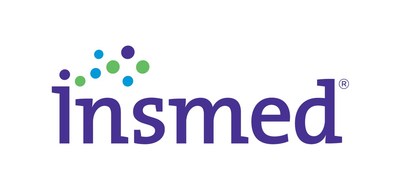New Subgroup Analyses from Landmark Phase 3 ASPEN Study of Brensocatib in Patients with Bronchiectasis Demonstrate Consistency with Positive Overall Trial Population Results
Insmed Incorporated (Nasdaq: INSM) presented positive late-breaking subgroup data from the Phase 3 ASPEN study of brensocatib in patients with non-cystic fibrosis bronchiectasis at the CHEST 2024 Annual Meeting. The subgroup analyses showed consistent positive impact on the rate of exacerbations across most prespecified subgroups, aligning with the overall trial results. Notably, brensocatib 25 mg demonstrated a reduced decline in lung function (FEV1) at Week 52 versus placebo for all prespecified subgroups.
The drug was well-tolerated, with common adverse events including COVID-19, nasopharyngitis, cough, and headache. Insmed plans to file a New Drug Application with the FDA in Q4 2024, aiming for a U.S. launch in mid-2025 and European and Japanese launches in H1 2026. If approved, brensocatib would be the first approved treatment for bronchiectasis and the first approved DPP1 inhibitor.
Insmed Incorporated (Nasdaq: INSM) ha presentato dati positivi di sottogruppi dallo studio di fase 3 ASPEN su brensocatib in pazienti con bronchiectasi non fibrosica cistica durante l'Assembla Annuale CHEST 2024. Le analisi dei sottogruppi hanno mostrato un impatto positivo consistente sulla frequenza delle esacerbazioni in quasi tutti i sottogruppi predefiniti, allineandosi con i risultati complessivi dello studio. In particolare, brensocatib 25 mg ha dimostrato un ridotto declino della funzione polmonare (FEV1) alla settimana 52 rispetto al placebo per tutti i sottogruppi predefiniti.
Il farmaco è risultato ben tollerato, con eventi avversi comuni tra cui COVID-19, nasofaringite, tosse e mal di testa. Insmed prevede di presentare una Domanda di Nuovo Farmaco alla FDA nel quarto trimestre del 2024, con l'obiettivo di un lancio negli Stati Uniti a metà del 2025 e lanci in Europa e Giappone nella prima metà del 2026. Se approvato, brensocatib sarebbe il primo trattamento approvato per la bronchiectasi e il primo inibitore DPP1 approvato.
Insmed Incorporated (Nasdaq: INSM) presentó datos positivos de subgrupos del estudio de fase 3 ASPEN sobre brensocatib en pacientes con bronquiectasias no asociadas a fibrosis quística en la Reunión Anual CHEST 2024. Los análisis de subgrupos mostraron un impacto positivo consistente en la tasa de exacerbaciones en la mayoría de los subgrupos predefinidos, alineándose con los resultados generales del ensayo. En particular, brensocatib 25 mg demostró un declive reducido en la función pulmonar (FEV1) a la semana 52 frente al placebo para todos los subgrupos predefinidos.
El fármaco fue bien tolerado, con eventos adversos comunes que incluyen COVID-19, nasofaringitis, tos y cefalea. Insmed planea presentar una Solicitud de Nuevo Medicamento a la FDA en el cuarto trimestre de 2024, con el objetivo de un lanzamiento en EE. UU. a mediados de 2025 y lanzamientos en Europa y Japón en la primera mitad de 2026. Si se aprueba, brensocatib sería el primer tratamiento aprobado para la bronquiectasia y el primer inhibidor de DPP1 aprobado.
인스메드 주식회사(나스닥: INSM)는 CHEST 2024 연례 회의에서 비낭포성 섬유증 기관지 확장증 환자를 대상으로 한 3상 ASPEN 연구의 긍정적인 하위 그룹 데이터를 발표했습니다. 하위 그룹 분석 결과는 대부분의 사전 정의된 하위 그룹에서 일관된 긍정적인 영향을 미쳤다는 것을 나타내며, 전체 시험 결과와 일치합니다. 특히, brensocatib 25 mg는 모든 사전 정의된 하위 그룹에서 위약에 비해 52주차에 폐 기능 감소가 줄어든 것으로 나타났습니다.
약물은 잘 견디며, 일반적인 부작용으로는 COVID-19, 비인두염, 기침 및 두통이 포함됩니다. 인스메드는 2024년 4분기에 FDA에 신약 신청서를 제출할 예정이며, 2025년 중반에 미국 출시 및 2026년 상반기에 유럽 및 일본 출시를 목표로 하고 있습니다. 승인이 된다면, brensocatib은 기관지 확장증에 대한 첫 번째 승인된 치료제이자 첫 번째 DPP1 억제제로 승인받을 것입니다.
Insmed Incorporated (Nasdaq: INSM) a présenté des données positives sur des sous-groupes lors de l'étude de Phase 3 ASPEN concernant brensocatib chez des patients atteints de bronchiectasie non fibrose kystique lors de la Réunion Annuelle CHEST 2024. Les analyses de sous-groupes ont montré un impact positif cohérent sur le taux d'exacerbations dans la plupart des sous-groupes prédéfinis, en accord avec les résultats globaux de l'essai. En particulier, brensocatib 25 mg a démontré un déclin réduit de la fonction pulmonaire (FEV1) à 52 semaines par rapport au placebo pour tous les sous-groupes prédéfinis.
Le médicament a été bien toléré, avec des événements indésirables courants tels que COVID-19, nasopharyngite, toux et céphalée. Insmed prévoit de soumettre une Demande de Nouveau Médicament à la FDA au quatrième trimestre 2024, visant un lancement aux États-Unis au milieu de 2025 et des lancements en Europe et au Japon dans la première moitié de 2026. Si approuvé, brensocatib serait le premier traitement approuvé pour la bronchiectasie et le premier inhibiteur de DPP1 approuvé.
Insmed Incorporated (Nasdaq: INSM) stellte positive Ergebnisse aus der Subgruppendatenanalyse der Phase-3-Studie ASPEN zu brensocatib bei Patienten mit nicht zystischer Fibrose-Bronchiektasie auf dem CHEST 2024-Jahrestreffen vor. Die Subgruppenanalysen zeigten eine konsistente positive Wirkung auf die Exazerbationsrate in den meisten vordefinierten Subgruppen und stimmten mit den Gesamtergebnissen der Studie überein. Besonders bemerkenswert ist, dass brensocatib 25 mg einen verringerten Rückgang der Lungenfunktion (FEV1) in Woche 52 im Vergleich zu Placebo für alle vordefinierten Subgruppen zeigte.
Das Medikament wurde gut vertragen, häufige unerwünschte Ereignisse sind COVID-19, Nasopharyngitis, Husten und Kopfschmerzen. Insmed plant, im vierten Quartal 2024 einen Neuen Arzneimittelantrag bei der FDA einzureichen, mit dem Ziel, Mitte 2025 in den USA und in der ersten Hälfte von 2026 in Europa und Japan auf den Markt zu kommen. Wenn genehmigt, wäre brensocatib die erste genehmigte Behandlung für Bronchiektasie und der erste genehmigte DPP1-Hemmer.
- Consistent positive impact on exacerbation rates across most subgroups
- Brensocatib 25 mg showed reduced decline in lung function (FEV1) for all subgroups
- Well-tolerated safety profile
- Planned NDA filing in Q4 2024
- Potential to be first approved treatment for bronchiectasis
- None.
Insights
The Phase 3 ASPEN study subgroup analyses for brensocatib in bronchiectasis patients show promising consistency with the overall positive trial results. Key points:
- Both 10mg and 25mg doses reduced exacerbation rates across most subgroups
- 25mg dose slowed lung function decline (FEV1) in all prespecified subgroups
- Well-tolerated safety profile with manageable adverse events
This data strengthens brensocatib's potential as a first-in-class treatment for bronchiectasis, a disease with no approved therapies. The consistent efficacy across subgroups suggests broad applicability. With NDA filing planned for Q4 2024 and potential launch in mid-2025, brensocatib could significantly impact the
This news significantly bolsters Insmed's market position and growth prospects. Key financial implications:
- First-mover advantage in the untapped bronchiectasis market
- Potential for premium pricing as the first approved therapy
- Expanded addressable market with efficacy across subgroups
- Near-term catalysts: NDA filing (Q4 2024), potential approval (2025)
With a
—Data Presented at the CHEST 2024 Annual Meeting—
"The positive results from the landmark Phase 3 ASPEN study have generated tremendous excitement among physicians and patients alike, providing hope for a much-needed approved treatment for bronchiectasis. Given the heterogeneity of this disease, it is striking that these new sub-analyses show a consistent positive impact on the rate of exacerbations across the majority of prespecified subgroups," said lead study investigator James Chalmers, MBChB, Ph.D., Professor and Consultant Respiratory Physician at the School of Medicine, University of
Consistent with positive results for the overall
Brensocatib was well-tolerated in the study. Treatment-emergent adverse events (TEAEs) occurring in at least
"We are incredibly excited to present subgroup findings from the
Insmed plans to file a New Drug Application with the
About
As part of the ASPEN study's conduct, more than 460 trial sites were engaged in nearly 40 countries. After excluding sites that did not enroll any patients and all sites in Ukraine, the total number of active sites in ASPEN was 391 sites in 35 countries. Adult patients (ages 18 to 85 years) were randomized 1:1:1 and adolescent patients (ages 12 to <18 years) were randomized 2:2:1 for treatment with brensocatib 10 mg, brensocatib 25 mg, or placebo once daily for 52 weeks, followed by 4 weeks off treatment. The primary efficacy analysis included data from 1,680 adult patients and 41 adolescent patients.
About Brensocatib
Brensocatib is a small molecule, oral, reversible inhibitor DPP1 being developed by Insmed for the treatment of patients with bronchiectasis, CRSsNP, and other neutrophil-mediated diseases. DPP1 is an enzyme responsible for activating neutrophil serine proteases (NSPs), such as neutrophil elastase, in neutrophils when they are formed in the bone marrow. Neutrophils are the most common type of white blood cell and play an essential role in pathogen destruction and inflammatory mediation. In chronic inflammatory lung diseases, neutrophils accumulate in the airways and result in excessive active NSPs that cause lung destruction and inflammation. Brensocatib may decrease the damaging effects of inflammatory diseases such as bronchiectasis by inhibiting DPP1 and its activation of NSPs. Brensocatib is an investigational drug product that has not been approved for any indication in any jurisdiction.
About Insmed
Insmed Incorporated is a people-first global biopharmaceutical company striving to deliver first- and best-in-class therapies to transform the lives of patients facing serious diseases. The Company is advancing a diverse portfolio of approved and mid- to late-stage investigational medicines as well as cutting-edge drug discovery focused on serving patient communities where the need is greatest. Insmed's most advanced programs are in pulmonary and inflammatory conditions, including a therapy approved in
Headquartered in
Forward-looking Statements
This press release contains forward-looking statements that involve substantial risks and uncertainties. "Forward-looking statements," as that term is defined in the Private Securities Litigation Reform Act of 1995, are statements that are not historical facts and involve a number of risks and uncertainties. Words herein such as "may," "will," "should," "could," "would," "expects," "plans," "anticipates," "believes," "estimates," "projects," "predicts," "intends," "potential," "continues," and similar expressions (as well as other words or expressions referencing future events, conditions or circumstances) may identify forward-looking statements.
The forward-looking statements in this press release are based upon the Company's current expectations and beliefs, and involve known and unknown risks, uncertainties and other factors, which may cause the Company's actual results, performance and achievements and the timing of certain events to differ materially from the results, performance, achievements or timings discussed, projected, anticipated or indicated in any forward-looking statements. Such risks, uncertainties and other factors include, among others, the following: the risk that the full data set from the
The Company may not actually achieve the results, plans, intentions or expectations indicated by the Company's forward-looking statements because, by their nature, forward-looking statements involve risks and uncertainties because they relate to events and depend on circumstances that may or may not occur in the future. For additional information about the risks and uncertainties that may affect the Company's business, please see the factors discussed in Item 1A, "Risk Factors," in the Company's Annual Report on Form 10-K for the year ended December 31, 2023 and any subsequent Company filings with the Securities and Exchange Commission (SEC).
The Company cautions readers not to place undue reliance on any such forward-looking statements, which speak only as of the date of this press release. The Company disclaims any obligation, except as specifically required by law and the rules of the SEC, to publicly update or revise any such statements to reflect any change in expectations or in events, conditions or circumstances on which any such statements may be based, or that may affect the likelihood that actual results will differ from those set forth in the forward-looking statements.
Contact:
Investors:
Bryan Dunn
Executive Director, Investor Relations
Insmed
(646) 812-4030
bryan.dunn@insmed.com
Media:
Mandy Fahey
Vice President, Corporate Communications
Insmed
(732) 718-3621
amanda.fahey@insmed.com
![]() View original content to download multimedia:https://www.prnewswire.com/news-releases/new-subgroup-analyses-from-landmark-phase-3-aspen-study-of-brensocatib-in-patients-with-bronchiectasis-demonstrate-consistency-with-positive-overall-trial-population-results-302270626.html
View original content to download multimedia:https://www.prnewswire.com/news-releases/new-subgroup-analyses-from-landmark-phase-3-aspen-study-of-brensocatib-in-patients-with-bronchiectasis-demonstrate-consistency-with-positive-overall-trial-population-results-302270626.html
SOURCE Insmed Incorporated









